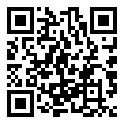Tools used for wiring: wire cutting pliers or diagonal pliers, wire stripping pliers, wire crimping pliers, screwdriver, electric soldering iron, hot air blower (blow shrink tube), pointed nose pliers, wrench, tweezers, and tape measure.
The crimping pliers include pre insulated end crimping pliers, tubular end crimping pliers, and bare end crimping pliers. Screwdriver, electric, pneumatic; Divided into crosses and characters according to shape. The wrench has a plum blossom, an opening, and a sleeve
The materials involved in wiring include wires, trunking, terminal blocks (cold pressed terminals), solder wire, heat shrink tubing, transparent plastic tubing, and number tubes
The wiring should be reasonable and attention should be paid to separating strong and weak currents
Wire classification
Classified according to fire protection requirements: ordinary type, flame retardant type
Divided by wire core: hard wire, soft wire
According to temperature: ordinary 70 degrees, high temperature resistance 105 degrees
Divided by color: black line, colored line. (Black lines are preferred)
Classified by voltage: Rated voltage values: 300/500V, 450/750V, 600/1000V, above 1000V.
Attention for wire selection
If there is no requirement, the cross-sectional area of the conductor shall not be less than 0.5 square millimetre (to ensure safety);
Selecting insulated wires without interference (cost saving);
Signal wires should use shielded dual core wires as much as possible;
Tin plated copper core wires should be used for equipment in humid environments or with the words "TH";
Wires are usually black in color; The DC power line is brown positive and blue negative, the neutral line is light blue, and chartreuse is connected to the large ground wire (heavy color).
Introduction to terminal blocks (cold pressed terminals)
Tubular pre insulated end, suitable for 0.5-50mm2 cross-sectional wire
Tubular bare end, suitable for 0.5 and 0.75 cross-section wires
Bare end, divided into TO and TU, both suitable for conductors with a cross-sectional area of 0.5 to 1.5
Quality requirements for cold pressed terminals (cold pressed terminals)
The material should be copper, and the surface must be treated with tin plating, tin lead alloy, silver or nickel, etc;
The pipe end should not have pipe seams.
Crimping attention
The indentation on the bare end must be in the center of the pressure pipe and pressed on the pipe seam;
The wiring part after crimping should not be bent;
When inserting the wire core into the end, it is not allowed to have broken wires or exposed wire cores to the outside;
Inspection: The pressed wire cannot be pulled off with normal force.

 中文版
中文版
